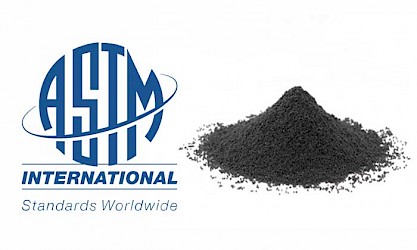Standard terminology on recovered Carbon Black published by ASTM International
 ASTM International – a standardization body introducing key definitions of products and materials with over 12,800 ASTM standards already in work worldwide – recently published their first standard relating to recovered Carbon Black (rCB).
ASTM International – a standardization body introducing key definitions of products and materials with over 12,800 ASTM standards already in work worldwide – recently published their first standard relating to recovered Carbon Black (rCB).
The ASTM Committee D36 on Recovered Carbon Black (rCB) was founded in 2017 to support the emerging rCB industry regarding the quality and safety of their products. Several sub-committees are responsible for developing standards for terminology, guidance, practices, and testing methods.
Recovered Carbon Black, typically derived from the thermal degradation of end-of-life tires, is a relatively new, sustainable raw material product for use in rubber, plastics, and pigment applications.
The new ASTM standard (D8178) meets the need for a set of common terms to clearly distinguish the value of rCB from char products. Else, it facilitates the communication about the performance of rCB within proposed applications.
D8178 outlines the importance of the differences between Char, Carbon Black (as defined by the ASTM Standard D3053), raw recovered Carbon Black and recovered Carbon Black (rCB).
Most importantly, the product name “recovered Carbon Black” (rCB) should apply only if the raw Carbon Black is freed from metals and fibers and was milled, which else gives typically semi-reinforcing properties to rCB in rubber.
In addition, the document cites existing standards related to the carbon black industry, recognized by the ASTM’s Committee D36, and maintained by the Committee D24. Among them are the following standards, which can be applied to by the rCB industry:
- Test Methods for Ash Content, Heating Loss, pH Value, Transmittance of Toluene Extract, Sulfur Content, Pelleted Fines and Attrition, Pellet Size Distribution, pelleted - Pour Density, etc.
- Test Methods for Carbon Black in SBR (Styrene Butadiene Rubber) - Recipe and Evaluation Procedures, Evaluation in NR (Natural Rubber), Morphological Characterization of Carbon Black Using Electron Microscopy, Determination of Benzo-α-Pyrene (BaP) Content, etc.
- Terminology Relating to Carbon Black
Else, as the typical carbon black characterization methods based on structure level and surface area measurements may not correlate to in-rubber performance in an equal matter for recovered Carbon Black products, ASTM will drive the identification of specific methods for rCB.
The detailed definitions of the terms and a more detailed information on the standards acceptable for use in the rCB industry is available in the ASTM’s document on its official website. As the document is subject to copyright laws, we encourage you to proceed to ASTM’s website for further information.
You can return to the main Market News page, or press the Back button on your browser.

